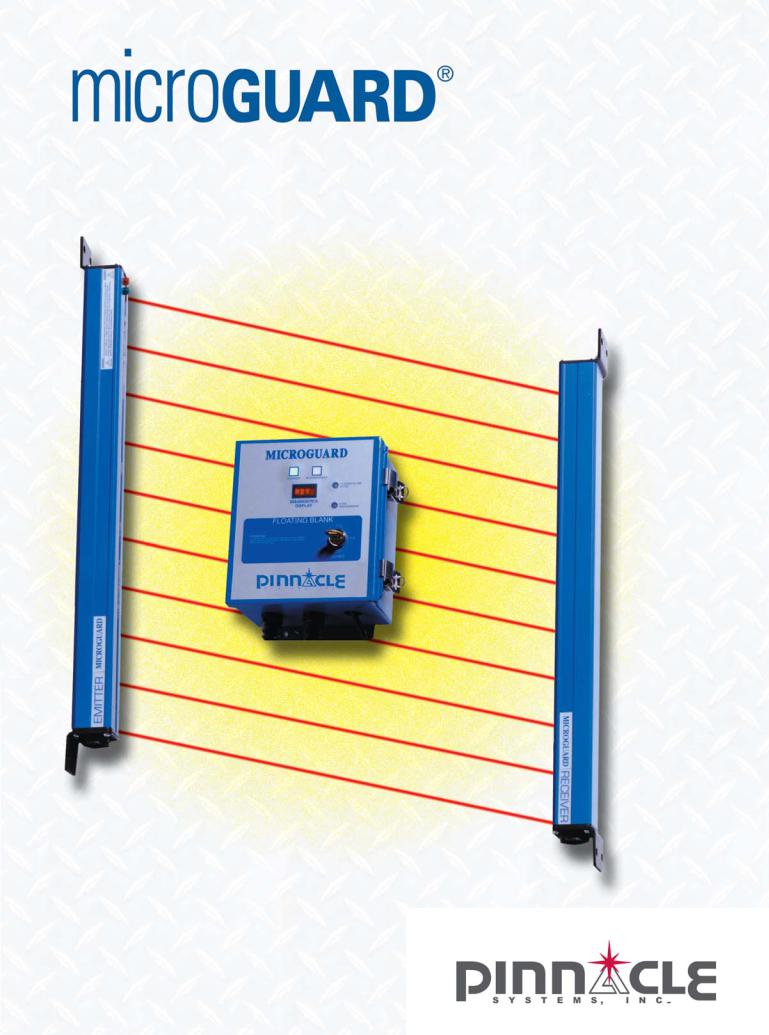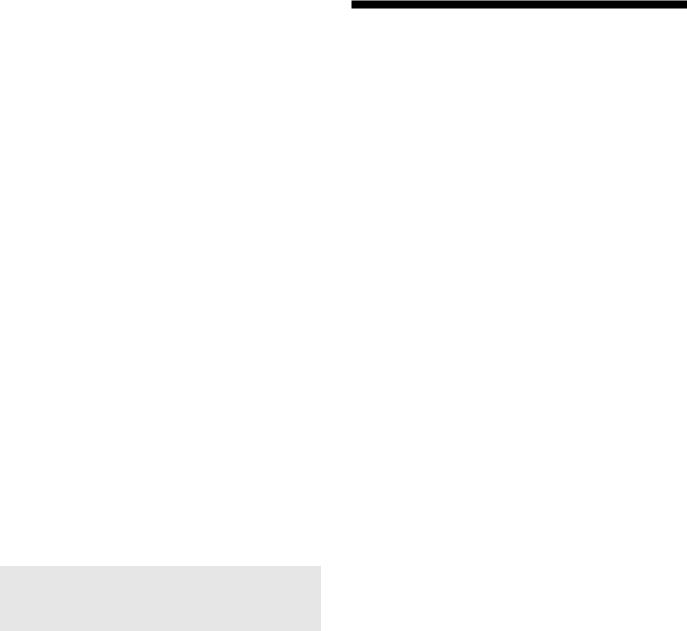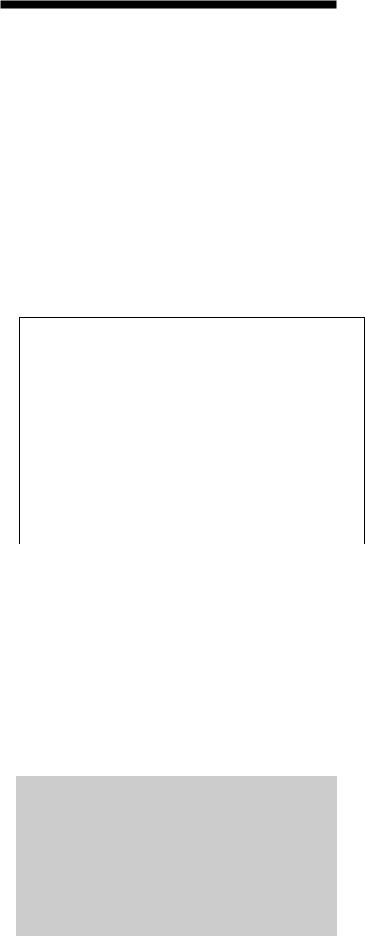Pinnacle Systems MG User Manual

Installation Manual
for the
Metal Box Controller Module
Rev 9-6

Metal Box Controller Module
Installation Manual
Pinnacle Systems, Inc.
3715 Swenson Avenue
St. Charles, IL 60174
P/N: 28-006r9-6
Customer Service: 630-443-8542 (CST)
(Please have Model #, Serial #, and Software Rev # Available) Sales and Marketing: 800-569-7697 (EST)
www.pinnaclesystems.com • sales@pinnaclesystems.com • service@pinnaclesystems.com

Proper Usage and Limitations
The information disclosed herein includes proprietary rights of the manufacturer. Neither this document nor the information disclosed herein shall be reproduced or transferred to other documents, used or disclosed to others for manufacturing purposes, or for any other purposes, except as specifically authorized in writing by the manufacturer. If this manual is supplied in connection with the sale or delivery of manufacturer’s equipment, it is to be used solely for maintenance, repair, or installation of such equipment.
The MicroGuard was manufactured in the United States. The Installation Manual was printed in the United States.
You must read and fully understand the following information pertaining to the proper use and limitations of your Microguard:
•The MicroGuard must be installed by qualified personnel only.
•The MicroGuard must NOTbe used on full revolution presses or any machine that cannot be commanded to stop at any time.
•You must NOT wire the Safety Output contacts of the MicroGuard to an external relay unless you use the External Relay Checking feature.
•The mechanical power press on which the
MicroGuard is installed must meet ANSI B11.1-
1988 and OSHA 1910.217 regulations. These include inspection and maintenance procedures that must be followed to comply with the regulations.
The manufacturer will NOT take responsibility for improperly maintained machinery.
•Point of operation safeguarding is defined in ANSI
B11.19-2003. This regulation is used to determine a safe distance to place your MicroGuard. The manufacturer takes no responsibility for injury as a result of improper safeguarding or improper safe distances.
•The MicroGuard may not be able to safely stop a press which has a faulty stopping mechanism. The manufacturer cannot be held responsible for an improperly maintained or faulty stopping mechanism.
•The MicroGuard must be checked before put into operation. Follow instructions provided in this manual for procedures on how to do this.
•The MicroGuard should never be modified or repaired except by qualified personnel and upon authorization of the manufacturer. Never operate machinery that is not in full working order.
•Make sure that all maintenance people, machine operators, die-setters, foreman, and supervisors have read and understood this manual and all procedures have been and will be followed.
•All procedures in this manual must be followed. The manufacturer cannot take responsibility for operation if all procedures and warnings in this manual are not followed.
Warranty
Manufacturer warrants that this product will be free from defects in material and workmanship for a period of two years from the date of shipment thereof. Within the warranty period, the manufacturer will repair or replace (at our discretion) any product that is disclosed as defective upon examination by the manufacturer and is returned with shipping charges prepaid. This warranty will not apply to any product that has been subjected to misuse, negligence, accident, restriction, and use not in accordance with manufacturer’s instructions or which will have been altered or repaired by persons other than the authorized agent or employees of the manufacturer.
Disclaimer
The provisions of the warranty are the sole obligations of the manufacturer and exclude all other warranties of merchantability, expressed or implied. Further, there are no warranties that extend beyond the above warranty.
Limitation of Liability
In the event of any claim for breach of any obligations of the manufacturer under any order, whether expressed or implied, and particularly in the event of any claim of a breach of the warranty or warranties contained in the paragraph “Warranty” or of any other warranties, expressed or implied which might despite the paragraph entitled “Disclaimer,” be determined to be incorporated in any order, the company shall under no circumstances be liable for any consequential or special damages, either in law or in equity, or for losses or expenses or claims for the same arising from the use of, or inability to use, the products of the manufacturer for any purpose whatsoever.
We have designed our equipment to the very highest performance and safety standards known to the current technological state of the art. However, the installation, usage, suitability, and fitness of our equipment for any purpose, known or unknown, is interdependent upon the performance of other equipment not manufactured, installed, or secured or maintained by the manufacturer. We cannot and do not accept responsibility for any overall system performance when factors, such as these, are beyond our control.
WARNING: The entire machine safety system must be tested at the start of every shift. Machine testing should include: (1) proper machine operation and stopping capability; and (2) verification of proper installation and settings of all point of operation guards and devices before the operation is released for production.
We will not supply individual component parts of any circuit board but will supply the individual circuit board complete. Individual detectors or emitters are available as a complete tested unit.
Fill this Information out Immediately
(It will be needed in the event you need assistance)
Purchase Date:________________________________
Purchased From:_______________________________
Model No.:____________________________________
Serial No.:____________________________________
Options:______________________________________
Microprocessor Revision No.:_____________________

Table of Contents
Introduction ............................................................................................................................................................ |
iv |
Theory of Operation................................................................................................................................................ |
iv |
The System............................................................................................................................................................ |
iv |
System Safety........................................................................................................................................................ |
iv |
Immunity to EMI/RFI................................................................................................................................................ |
v |
CE Approved........................................................................................................................................................... |
v |
Specifications ........................................................................................................................................................ |
1 |
Standard Features |
|
Auxillary Output Contact ......................................................................................................................................... |
2 |
Cincinnati Interface.................................................................................................................................................. |
2 |
External Relay Check.............................................................................................................................................. |
2 |
Standard Output Contacts ...................................................................................................................................... |
3 |
Fault Relay Output .................................................................................................................................................. |
3 |
Optional Features |
|
Auto Blank............................................................................................................................................................... |
4 |
Emergency Stop Input............................................................................................................................................. |
5 |
DeviceNet................................................................................................................................................................ |
5 |
Floating Blank.......................................................................................................................................................... |
5 |
Depth Penetration Factor........................................................................................................................................ |
5 |
Guarding Mute-Out.................................................................................................................................................. |
6 |
Latching Relays....................................................................................................................................................... |
6 |
Installation Procedures ...................................................................................................................................... |
7 |
Resetting the MicroGuard........................................................................................................................................ |
8 |
Alignment Procedure............................................................................................................................................... |
9 |
Operations............................................................................................................................................................. |
10 |
ANSI Standard B11.19.2003.................................................................................................................................. |
11 |
Safeguarding with Mechanical Guards.................................................................................................................. |
12 |
Light Curtain Testing Procedure............................................................................................................................ |
12 |
Controller Module Setup........................................................................................................................................ |
13 |
Single Pylon Set Controller Module Jumper Settings............................................................................................ |
14 |
Multiple Pylon Set Controller Module Jumper Settings......................................................................................... |
15 |
Wiring.................................................................................................................................................................... |
16 |
Swivel Bracket Dimensions................................................................................................................................... |
17 |
Pylon Dimensions (by model) (Swivel).................................................................................................................. |
18 |
Additional cable information (Swivel)..................................................................................................................... |
18 |
Fixed Bracket Dimensions..................................................................................................................................... |
19 |
Pylon Dimensions (by model) (Fixed).................................................................................................................... |
19 |
Additional cable information (Fixed)...................................................................................................................... |
19 |
Dimensions |
|
Physical Dimensions of Swivel Bracket................................................................................................................. |
17 |
Physical Dimensions of Swivel Bracket................................................................................................................. |
18 |
Physical Dimensions of Fixed Bracket.................................................................................................................. |
19 |
Controller Module.................................................................................................................................................. |
20 |
- i -
|
|
|
|
|
Table of Contents |
Accessories |
|
|
Cornering Mirrors................................................................................................................................................... |
21 |
|
Pedestal................................................................................................................................................................. |
22 |
|
Swing-Arm Mounting Bracket................................................................................................................................ |
22 |
|
Appendix A: Diagnostics & Troubleshooting |
|
|
Diagnostic Indicator Lights ................................................................................................................................. |
A-1 |
|
Obstruction or Misalignment................................................................................................................................ |
A-1 |
|
Error Conditions................................................................................................................................................... |
A-1 |
|
Status Display Messages.................................................................................................................................... |
A-2 |
|
Fault Display Messages...................................................................................................................................... |
A-2 |
|
Appendix B: Regulations and Guidelines |
|
|
OSHA Regulations............................................................................................................................................... |
B-1 |
|
Machine Control Reliability.................................................................................................................................. |
B-1 |
|
Safety Guidelines and Management |
|
|
Operational Safety........................................................................................................................................... |
B-2 |
|
Power Press Guarding.................................................................................................................................... |
B-2 |
|
Power Press Care through Inspection and Maintenance................................................................................ |
B-3 |
|
Safety Enforcement......................................................................................................................................... |
B-3 |
|
Supervisor Training.......................................................................................................................................... |
B-3 |
|
Operator Training............................................................................................................................................. |
B-3 |
|
Appendix C: Replacement Parts |
|
|
Controller Module Replacement Parts................................................................................................................. |
C-1 |
|
Pylon Replacement Parts.................................................................................................................................... |
C-2 |
|
Appendix D: USB Diagnostic Codes |
|
|
Model MG or DR USB Diagnostic Codes................................................................................................. |
D-1 to D-2 |
|
- ii -

Table of Contents |
|
|
Figures |
|
|
Figure 1: |
Wiring External Relays ........................................................................................................................ |
2 |
Figure 2: |
Bottom Board Inside Control Box......................................................................................................... |
6 |
Figure 3: |
4 Sided Guarding with Dual Stud Guard Brackets, TRM Mirrors and Model #8000 Pedestals............ |
9 |
Figure 4: |
Minimum Object Sensitivity and D(pf)................................................................................................ |
11 |
Figure 5: |
Controller Module (Lower Board)....................................................................................................... |
13 |
Figure 6: |
Controller Module Jumper (Upper Board).......................................................................................... |
14 |
Figure 7: |
Multi-pylon Controller Module Connector/Jumper Detail.................................................................... |
15 |
Figure 8: |
Controller Module Wiring Diagram..................................................................................................... |
16 |
Figure 9a: |
Swivel Bracket Dimensions................................................................................................................ |
17 |
Figure 9b: |
Swivel Bracket Dimensions, pylon dimensions (by model), and additional cable information............ |
18 |
Figure 10: |
Fixed Bracket Dimensions, pylon dimensions (by model), and additional cable information............. |
19 |
Figure 11: |
Controller Module Dimensions........................................................................................................... |
20 |
Figure 12: |
Cornering Mirror Dimensions.............................................................................................................. |
21 |
Figure 13: |
Pedestal Dimensions.......................................................................................................................... |
22 |
Figure 14: |
Swing-Arm Mounting Bracket Dimensions......................................................................................... |
22 |
Figure 15: |
Controller Module Replacement Parts.............................................................................................. |
C-1 |
Figure 16: |
Pylon Replacement Parts................................................................................................................. |
C-2 |
Tables |
|
|
Table 1a: |
.5” Beam Spacing Pylons..................................................................................................................... |
5 |
Table 1b: |
1” Beam Spacing Pylons...................................................................................................................... |
5 |
Table 2: |
Mechanical Guards............................................................................................................................. |
12 |
Table 3: |
Controller Module Connection Chart (Lower Board).......................................................................... |
13 |
Table 4: |
Single Pylon Set Controller Module Jumper Chart............................................................................. |
14 |
Table 5: |
Multiple Pylon Set Controller (DUAL - SC) Module Length Jumper Chart.......................................... |
15 |
Table 6: |
Controller Module Dimensions........................................................................................................... |
20 |
Table 7: |
Cornering Mirror Dimensions (MGM & TRM)..................................................................................... |
21 |
- iii -

The Microguard is the latest in infrared safety curtain technology. Contained in the main housing (Controller Module) is a diverse redundant architecture that is designed to detect internal failures in the Emitter pylon(s), Receiver pylon(s), and the Controller Module which will immediately send a “STOP” command to the machine, thus being “FAIL-SAFE.” Failures are immediately reported on the diagnostic message display for immediate evaluation.
Diverse redundancy means that there are at least two ways to detect a system failure, two ways to shut it down, and that the two methods of detection and shut down use different techniques. This eliminates the chance an inherent fault in one circuit will effect the other. For example: The stop circuit output contacts run through two relays and both are monitored for correct position through a second set of contacts on each relay. A special circuit monitors those contacts, but a different circuit (a test circuit) monitors the first circuit to make sure that it is functioning correctly. Two different microprocessors isolated from one another each monitor the same signals and monitor each other. Either microprocessor can turn off the output relays, but it requires both to turn them on. Special watchdog circuits on the microprocessors and on the output relay circuits prevent an unsafe condition by turning off both outputs relays should either or both microprocessors become erratic.
With the aid of advanced microprocessor technology, the MicroGuard can not only detect a fault in the light curtain but spell out the exact problem. This advancement is a great help during alignment, use, and servicing of the light curtain. It not only can detect shorted and open infrared emitters, but indicate which emitters have failed, allowing the faulty board to be replaced.
Built into the MicroGuard is an optically coupled external relay check which can detect open or short circuits, a Cincinnati Interface, provision for auxiliary output contacts, and external voltage check input. The power supply is designed to accommodate most voltage requirements, from DC to AC (see Specifications).
As the MicroGuard is a single function device, that of sensing an unauthorized intrusion into a guarded area while simultaneously determining that it is capable of sensing such an intrusion, any internal malfunction will manifest itself with a RED condition shut down.
Theory of Operation. The MicroGuard guards an area by projecting a curtain of infrared light across it. It forms a curtain by utilizing infrared emitters in line very close together on .5” or 1” centers. This close spacing makes it impossible to place a body part through the curtain without detection. For every infrared emitter there is an infrared detector directly opposite. When an obstruction
Introduction
is placed between them, the beam is broken and the absence of a beam is observed by the Controller Module which de-energizes the output relays and opens the circuit it is connected to.
The System. The MicroGuard employs infrared technology in a small sealed NEMA 4 aluminum housing which provides harmless invisible protection and an unobstructed view of the guarded area. The Microguard consists of three parts: an Emitter pylon(s), Receiver pylon(s), and Controller Module. The Emitter pylon(s) contains infrared light emitting diodes spaced .5” or 1” apart down the entire length of the pylon. The Receiver pylon(s) contains an equal number of infrared detector’s and transistor receivers also spaced .5” or 1” apart. The Controller Module contains diverse redundant technology that includes two different microprocessors, self-checking circuitry, power supply, safety output contacts, and a diagnostics display.
System Safety. The MicroGuard employs diverse redundant technology that provides a backup for every system that could cause an unsafe condition. Upon power up, all systems are checked before activating the output relays. Once the unit passes the initial tests and activates the system it is then tested by both microprocessors and other circuits once per scan of the light curtain. All signals are presented to both microprocessors, but are isolated from one another to prevent a failure of one microprocessor should the other crash. Other circuits detect short circuits, open circuits, proper voltage, proper oscillation, etc. The use of special dual force guided safety relays assure that if one fails, the other can safely shut down the unit. Additionally, watchdog circuits on the relays prevent an unsafe condition even if both microprocessors failed. All the standard and optional features that run on the MicroGuard are designed with safety in mind:
The Floating Blank option allows only one object to be placed into the light curtains field of view. Even if the object is smaller than the allowed size, a second object will cause the unit to go RED.
The Auto Blank option programs in the exact size and location of an object automatically and thus can detect any movement in the object and shut down the light curtain, which must be reset with a key.
The External Relay Check can detect both an open or a short in the external relay or its wiring. The standard Cincinnati Interface provides a means to assure that the light curtain can open up its output relays between press cycles.
- iv -

Introduction
Immunity to EMI/RFI. The entire system is shielded, including the pylon cables. The use of MOV’s, filters, and chokes make it immune to the noise found in the industrial environment. Even the software embedded into the dual microprocessors is written to cope with a noisy environment.
CE Approved. CE approval was third party certified by UL/ DEMKO to IEC61496-1,-2. CE approved units offer
+/-2deg beam angle, which is tighter than the standard Microguard.
- v -

Input Power
18 to 33 VDC @ 10 W (optional)
90 to 140 VAC @ 12 W (standard)
128 to 240 VAC @ 12 W (optional) All AC voltages work with 50 or 60 Hz
Fuses
AC power: |
1 AMP |
Slow Blow (250VAC) |
DC power: |
1 AMP |
Fast Blow |
Output Circuits (all isolated)
Terminals #12-13: N.O. (held closed when Green) control reliable dry STOP circuit, wired through K1 & K2 relays. 4A @ 120vac recommended max
Terminals #14-15: N.O. (held closed when Green) control reliable dry STOP circuit, wired through K1 & K2 relays. 4A @ 120vac recommended max
Terminals #9-10-11: N.O. (held closed when
Green) – common – N.C. (held open when Green) dry auxiliary circuit, wired through K3 relay.
4A @ 120vac recommended max
Alarm + - : N.O. (held closed when powered and NO
FAULTS) dry auxiliary circuit, wired through K4 relay.
4A @ 120vac recommended max
NOTE: For Older Control boxes prior to October 2007:
Both terminals #12-13 and #14-15 must be used to achieve a control reliable STOP circuit. Newer control boxes can use either or both sets of terminals.
Indicators
|
External: |
|
|
|
|
|
OK/CLEAR |
|
Green |
|
|
|
BLOCK/FAULT |
|
Red |
|
|
|
AUTO/FLOAT ACTIVE |
Yellow |
|
||
|
SLAVE DISAGREEMENT |
Red |
|
||
|
The Diagnostics Display is a four-digit |
|
|||
|
alphanumeric with scroll |
|
|
||
Internal: |
|
|
|
|
|
+12V |
(RED) |
D2 |
CINN INT. |
(GRN) |
D10 |
+5V |
(YEL) |
D4 |
EXT RELAY |
(GRN) |
D11 |
+5V |
(YEL) |
D3 |
-5V |
(GRN) |
D17 |
|
|
|
FAULT RELAY |
(GRN) |
D21 |
Specifications
Metal Box Controller Module
Construction:
Control Unit: All 18 Gauge painted steel NEMA 12 lockable box with sealed front panel and sealed cable entry fittings (8 lbs.).
Pylons: Heavy-duty aluminum extrusion
NEMA 4. Replaceable IR lens.
Sealed bulkhead positive locking circular connectors. (Optional polycarbonate protective tube guards).
Cables: Emitter 20’/ Receiver 8’ (supplied standard). Shielded PVC 22 AWG cable
(optional cable lengths available).
Temperature Range 32° to 120° F
Dimensions
Controller Module: (see Dimensions)
Pylons: 1.45” (36.83mm) square (see Dimensions)
Beam Spacing
.5” (12.7mm) standard
1” (25.4mm) (optional). The Floating Blank option changes the effective beam spacing.
Minimum Object Sensitivity:
.5” (12.7mm) beam spacing is .55” (14mm) 1” (25.4mm) beam spacing is 1.18” (30mm)
Response Time < 30 mSec total
Scanning Frequency 5.9 KHz
Shock Tested to withstand high vibration applications.
Self-Checking every 20 milliseconds
Scanning Distance All units are supplied standard with a 20’ (6.1m) scanning capability. Extended range units are available and must be specified -- 50’ maximum (15.2m).
Maximum Operating Distance Stated as last two digits in model number.
1

Standard Features
Metal Box Controller Module
Auxiliary Output Contact (K3)
Description: K3 relay uses the same driver circuitry as the K1 relay, but has its own relay checking circuitry. This means that you should never use the K3 relay in series with the K1 relay unless you use K2 in another stop circuit.
Usage: K3 has both N.O. and N.C. outputs off the same common. This can be used in conjunction with the standard output contacts. Never just use K3 by itself or with K1.
N.O. contact is closed when the curtain is GREEN.
N.C. contact is open when the curtain is GREEN.
Cincinnati Interface
Description: Provided to allow an external device to determine if the light curtain is still capable of shutting down the safety control circuit. The Cincinnati Interface allows an external device to override the light curtain, initiate a RED condition, and open up the standard output relay contacts.
Application: Cincinnati Press, PLC
Usage:
Type1: The press interface provides 24VDC when it wants the guard to de-energize (go RED). Connect this press signal to Terminal #5 and Ground to Terminal #6.
Type 2: The press interface provides Ground when it
Figure 1: Wiring External Relays
wants the guard t de-energize (go RED). Connect this signal to Terminal #6 and attach nothing to Terminal #5. You must install the jumper J8 (bottom board).
(seeInstallationProcedures,“ControllerModuleSetup”)
External Relay Check
Description: Allows the MicroGuard to monitor a pair of external relays in series using the external relays secondary set of DRY contacts, provided that they are N.C. and captive contacts. This captive or force-guided contact will maintain the identical position as the primary set of contacts on the external relays, except that the secondary set of contacts are wired up to signal the reverse of the primary. (i.e., primary are N.O., secondary are N.C.) The circuit looks for both closure and opening of the external relay contacts. This system is the only safe External Relay Check.
Application: Monitoring external relay contacts for shorts or opens.
Usage: Follow Figure 1 for wiring your external relays.
You must first activate this feature by using the spare jumper and placing it across J19 labeled EXT (door board). This system requires that both N.C. relay contacts be wired in series then back to the terminals inside the Controller Module. Relay contacts must be DRY contacts. Both external relay contacts must be closed when the light curtain is RED within .25 sec or an
12 |
13 |
14 |
15 |
|
|
|
|
|
|
|
|
|
|
|
|
|
|
|
|
|
|
|
|
|
|
|
|
|
|
|
|
|
|
|
|
|
|
|
|
|
|
2

Standard Features
Metal Box Controller Module
error will occur (this detects an open or a contact weld). When the light curtain goes GREEN it will record the opening of the external relay. If the light curtain goes RED again without ever sensing the opening of the external relays, an error will occur (this detects a short or failed relay) and cause the light curtain to lock up and must be powered down to clear the error. A Red LED (D14) will light up when external contact is closed (see
Installation Procedures, “Controller Module Setup.” )
Captive Contact Definition: one pole inside the relay always maintains the identical position to the other pole. (i.e., if one pole contact welds closed, the other pole remains closed even when the relay coil is de-energized.
NOTE: Use shielded cable for relay check inputs.
Standard Output Contacts (K1 & K2)
Description: Both K1 and K2 relays each have there own relay driving circuitry and relay checking circuitry and are fully independent of each other having there own output terminals. The MicroGuard checks the position of all the relays and shuts them all down if any are found in the wrong position. In order for the system to remain safe during a single failure of one relay, you must be using the relays such that the second relay can still shut the system down if the first one ever fails. This can either be by wiring both relays in series or using both relays separately in two control circuits.
Usage: K1 and K2 have separate outputs and both must be used either together in series with your stop circuit or separately in two stop circuits. K1 and K2 outputs are N.O. and close when the curtain is GREEN only.
Fault Relay Output
Description: It will not change states due to curtain blockage.
Application: Can be used to signal a remote station of an unexpected machine shut down.
Usage: The fault relay provides a dry contact that is open when good and closed when a fault or loss of power occurs. Use the alarm contacts on the power supply board. The dry contact is isolated up to 120VAC.
To Actviate: Install jumper on J17 (bottom board) top 2 pins. Install jumper on J9 (door board) between Latch and Close pins (left side). This feature will disable remote latching. D21 will light up to show the relay is active.
3

Optional Features
Metal Box Controller Module
Auto Blank [patent # 5,243,183]
Description: Allows user to program the exact size and location of an object (i.e., a conveyor, table, work piece, etc.) automatically and can detect any movement in the object causing the light curtain to shut down.
Application: With the obstruction in place, turn the key swith from “OFF” to any mode of operation. If the object(s) do not exceed the total allowable size, the unit will energize the safety outputs.
Standard Operation: If the obstruction is moved or removed, the unit will issue a “MOVE” fault, but will re-energize the safety outputs when the obstruction is returned to the original position. Standard operation allows for a total of eight beams to be blocked anywhere in the curtain (they do not have to be next to each other).
Optional Operation: If the obstruction is moved or removed, the unit will issue a “MOVE” fault and lockup, requiring you to re-program the obstruction.
Troubleshooting: If you get a “MOVE” fault when the obstruction did not move, it is possible that you are just barely covering a beam and either vibration or reflections are causing the beam to become uncovered.
The uncovered beam then causes a fault.
To Activate Feature: This feature must be ordered and requires exchanging the computer chips (seeInstallation Procedures, “Controller Module Setup”).
WARNING: Leave key switch in OFF/RESET position while installing, setting up, and testing the light curtain. Use Auto Blank only after you are able to get a clear signal from the curtain with no obstruction.
The term “Auto Blank” is an abbreviation which stands for Automatic Programmable Beam Blanking. Auto Blanking is controlled by a multi-position keyswitch and has three distinct modes of operation:
1)Must be reset if auto blank obstruction moves or guard penetrated. The AUTO BLANK obstruction must remain in its exact location permanently. Any movement in theAUTO BLANK obstruction and/or additional guard penetration will latch the light curtain in a RED condition and must be reset via the keyswitch.
NOTE: If no obstructions were programmed in, the guard will still latch in a RED condition should the guard be penetrated.
2)Must be reset if auto blank obstruction moves.
The Auto Blank obstruction must remain in its exact location permanently. This works like Mode 1 except guard penetrations will not latch in a RED condition.
3)Mode 2 with floating blank. This mode works like Mode 2 with the addition of a Floating Blank which is set to allow a one beam float (see
Optional Features, Floating Blank”).
NOTE: If no obstructions were programmed in, the guard will still allow a one beam float.
Programming: To program, turn the keyswitch into the
OFF/RESET position and place the obstruction(s) in the guarded area. Now, turn the keyswitch into the desired mode of operation. The exact size and location of the object(s) are now in memory. The Depth Penetration Factor D(pf) must be set to account for the one beam float (see Optional Features, “Floating Blank”).
Diagnostics Display
AB Auto Blank detected an object (the number indicates the size of the object).
RDY No objects programmed in, keyswitch in Mode 1 or 2.
FB No objects programmed in, keyswitch in Mode 3
SIZE Obstruction size exceeded a total of eight beams.
PENT Penetration of the light curtain occurred while keyswitch was in Mode 1.
MOVE Auto Blank obstruction moved.
IMPORTANT: Place Auto Blank keyswitch into
OFF/RESET position and remove any obstructions while aligning light curtain. Do not use Auto Blank until light curtain is correctly aligned (see Installation Procedures, “Alignment Procedure”).
The keyed selector switch is designated to be supervisory controlled. After installation, the safety key should be removed and controlled only by the safety supervisor or authorized plant personnel.
4

Emergency Stop Input(s)
Description: This option utilizes two normally-closed emergency stop contacts to achieve a Catagory 4 safety level, per EN 954-1. If either or both emergency stop contacts open, power to the safety output relays is removed, causing the relays to de-energize and send a stop signal to the guarded machine.
Application: This protects against a safety switch contact failure or wiring fault. A contact failure or wiring short will inhibit the system reset, causing the system’s Diagnostic Message Display to indicate an Emergency Stop Input Failure.
Usage: Wire one N.C. contact between Terminal #1 and #4. Wire the second N.C. contact between Terminal #3 and #4 (located on power supply board). This option cannot be used with Mute-Out. Alterative option: Wire first N.C. contact between Terminal #6 and #4. Wire second N.C. contact between Terminal #7 and #8. This option cannot be used with Cincinnati or External relay checking features. To reset ESTOP: Close both ESTOP inputs, then use the latching relay reset input to clear
ESTOPfault (cycle closure betweenTerminal #2 and 4).
DeviceNet™
Description: Optional external board that is mounted to the door board inside the Metal Box Controller Module. External board comes with its own directions.
Floating Blank
Description: On a press brake, the Floating Blank permits the work piece to be placed in the guarded area and can be moved around as long as it does not exceed the object sensitivity selected. A keyswitch by default allows for zero, one, two, or three beams to be blocked anywhere in the curtain as long as all the blocked beams are next to each other. The customer may request different blanking sizes for different applications. The Minimum Object Sensitivity (MOS) and the Depth Penetration
Factor (DPF) change when the key switch position is changed. The DPF is used to compute the safety distance.
Location of the light curtain from the point of operation must include the depth penetration factor D(pf) equivalent to the beam spacing.
Minimum Object Sensitivity indicates the minimum size required to cause the light curtain to detect an object even if it is moving (floating). If the obstruction is slightly smaller (less than .25”) than the stated number, the light curtain may blink RED/GREEN when the object is moving in the field of view. If the obstruction is smaller than the stated number by at least .25”, then the light curtain will stay GREEN as long as there are
no additional obstructions.
5
Optional Features
Metal Box Controller Module
Depth Penetration Factor is the number used to compute the distance the light curtain should be placed from the point of operation (see Installation Procedures, “ANSI Standard B11.19-2003”).
Diagnostics Display:
RDY Keyswitch is in the lowest position (Floating Blank is off).
FB Indicates Floating Blank active and the number of blocked beams.
OBST A second object found in the curtain (only one obstruction is allowed to float).
Table 1a: .5” Beam Spacing Pylons
Display |
Minimum |
D(pf) Depth |
Max. Floating |
|
Object |
Penetration |
object size |
||
|
Sensitivity, S |
Factor |
less than |
|
|
Inches/Millimeters |
Inches/Millimeters |
Inches/Millimeters |
|
RDY (float off) |
0.55” / 14mm |
0.935” / 23.8mm |
0.00” / 0.0mm |
|
FB1 (1 beam float) |
1.18” / 30mm |
3.077” / 78.2mm |
0.45” / 11.4mm |
|
FB2 (2 beam float) |
1.75” / 45mm |
5.015”/129.2mm |
0.95” / 24.1mm |
|
FB3 (3 beam float) |
2.36” / 60mm |
7.089”/180.2mm |
1.45” / 36.8mm |
|
FB4 (4 beam float) |
2.95” / 75mm |
9.095”/231.2mm |
1.95” / 49.5mm |
|
FB5 (5 beam float) |
3.54” / 90mm |
11.101”/282.2mm |
2.45” / 62.2mm |
|
FB6 (6 beam float) |
4.13” /105mm |
13.107”/333.2mm |
2.95” / 74.9mm |
|
|
|
|||
|
|
|||
Table 1b: 1” Beam Spacing Pylons |
|
|||
Display |
Minimum |
D(pf) Depth |
Max. Floating |
|
Object |
Penetration |
object size |
||
|
Sensitivity, S |
Factor |
less than |
|
|
Inches/Millimeters |
Inches/Millimeters |
Inches/Millimeters |
|
Rdy (float off) |
1.18” / |
30mm |
3.077” / 78.2mm |
0.00” / 0.0mm |
FB1 (1 beam float) |
2.36” / |
60mm |
7.089” /180.2mm |
0.95” / 24.1mm |
FB2 (2 beam float) |
3.54” / |
90mm |
11.101” /282.2mm |
1.95” / 49.5mm |
FB3 (3 beam float) |
4.72” / 120mm |
15.113” /384.2mm |
2.95” / 74.9mm |
|
|
|
|
|
|
IMPORTANT: Place Floating Blank keyswitch in lowest position and remove any obstructions while aligning light curtain. Do not use Floating Blank until light curtain is correctly aligned (see
Installation Procedure, “Alignment Procedures”).
The keyed selector switch is designated to be supervisory controlled. After installation, the safety key should be removed and controlled only by the safety supervisor or authorized plant personnel.
